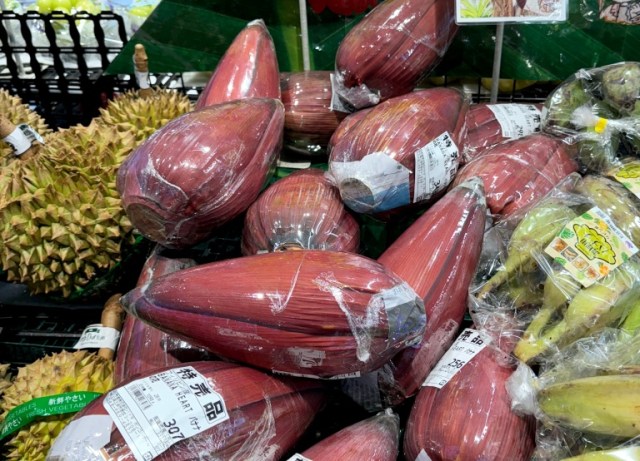
Sometimes, you don’t need to fully understand something to know that you like it.
Bananas are one of the most popular fruits in Japan, and you’ll find them for sale in every supermarket, and a lot of convenience stores too. But banana flowers? Our ace reporter Mr. Sato had never seen one of those until he stopped by Bongo Bazar, a grocery store in the town of Misato, Saitama Prefecture.
As you can probably guess from the name, Bongo Bazar isn’t just some run-of-the-mill supermarket. It’s a specialty store that specializes in southeast Asian foodstuffs, and even includes markers on its shelves for which of its products are Halal.
Banana flowers are also called banana blossoms or banana hearts. On Mr. Sato’s visit, Bongo Bazar had one at a discounted price of 270 yen (US$1.80) after tax. Having never purchased one before, he couldn’t say if this was a good price or not, but it was affordable enough to convince him to buy it and satisfy his culinary curiosity.
Banana flowers form at the bottom of a tree’s last bunch of unripe bananas, and they’re big. The first step in preparing them is to peel away the outer purple layers, which are big enough that you can do it by hand.
At the broader end of the flower you’ll find a handful of tufts, which you can pull off and discard too.
The core of the blossom is a pale yellow color, and this is the part that’s edible. The stem isn’t, though, so it gets sliced off.
What’s left over looks kind of like a bamboo shoot, and it felt like one too, in terms of firmness, as Mr. Sato sliced it in half.
Since this is a banana flower, Mr. Sato had been wondering if it’d have a sweet, fruity smell when he cut into it. To his surprise, though, it had no noticeable aroma at all.
Banana flower is said to have a naturally bitter flavor, so it’s usually soaked in a vinegar solution prior to cooking/eating to help soften the astringency. The vinegar is also supposed to help preserve the banana flower’s color, since once the outer layers are peeled and the core is exposed to air, it’ll oxidize and turn brown or black.
A ratio of one tablespoon of vinegar to about 475 milliliters (roughly two cups) of water is supposed to be sufficient, and after getting the banana flower peeled, diced, and into the solution, Mr. Sato put it in the fridge to let it soak overnight.
When Mr. Sato came back to check on it the next day, he found that, despite his efforts, the color had changed significantly.
But hey, that wouldn’t matter as long as the eating experience was still good, right?
The final pre-cooking prep step was to rinse the banana flower in cold water.
Mr. Sato decided to try eating the banana flower two different ways. First, he made a banana flower soup by pouring beef-stock broth into a pan, adding a few big chopstick-grabs of banana flower, brining everything to a boil, and then turning off the flame.
He also made a banana flower salad, which, to be honest, was just a plate of raw banana flower with salad dressing.
They weren’t much to look at, and in hindsight Mr. Sato wished he’d added a sprig of parsley or some other kind of garnish. On the other hand, since this was going to be his first experience eating banana flower, the lack of distractions would help him focus on the star ingredient itself.
Starting with the soup, Mr. Sato was surprised at how much crunch the banana flower still had…pleasantly surprised! The texture was about halfway between crisp chopped cabbage and bamboo shoot, and he loved it.
Similar to how banana flower doesn’t smell like banana fruit, it doesn’t taste like it either. There’s no sweetness, and the pre-cooking vinegar treatment seemed to have removed all the bitterness too. Really, all of the flavor that Mr. Sato was feeling came from the beef broth, with no discernable taste to the banana flower itself.
Moving on to the salad, here Mr. Sato found a noticeable sour taste, but that’s because of the vinegar the banana flower had absorbed, which here hadn’t been replaced by any other flavor or seasoning since he was eating it raw. Again, though, the texture was outstanding.
So Mr. Sato’s taste test ends with the unusual result in that even after he’s eaten it, he still can’t really say how banana flower tastes, since it doesn’t seem to have much intrinsic flavor at all, at least after being vinegar treated. And yet, he’d very much like to eat more of it, because of how satisfying its texture is. He’s already thinking of trying it in soup with chicken broth, or maybe sprinkling some of it into a salad with other southeast Asian ingredients, like maybe a green papaya salad…assuming, of course, he can find it again at a supermarket.
Shop information
Bongo Bazar / ボンゴバザール
Address: Saitama-ken, Misato-shi, Hikonari 3-208-1
埼玉県三郷市彦成3-208-1
Open 10 a.m.-8 p.m.
Website
Photos ©SoraNews24
● Want to hear about SoraNews24’s latest articles as soon as they’re published? Follow us on Facebook and Twitter!
[ Read in Japanese ]


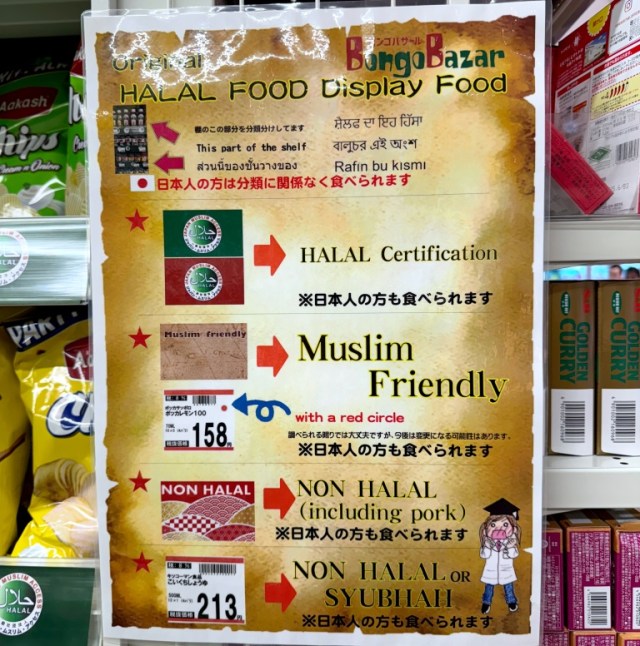

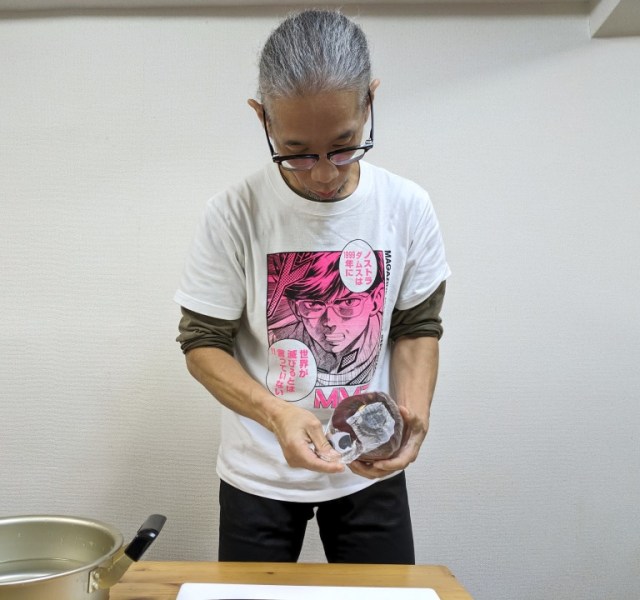
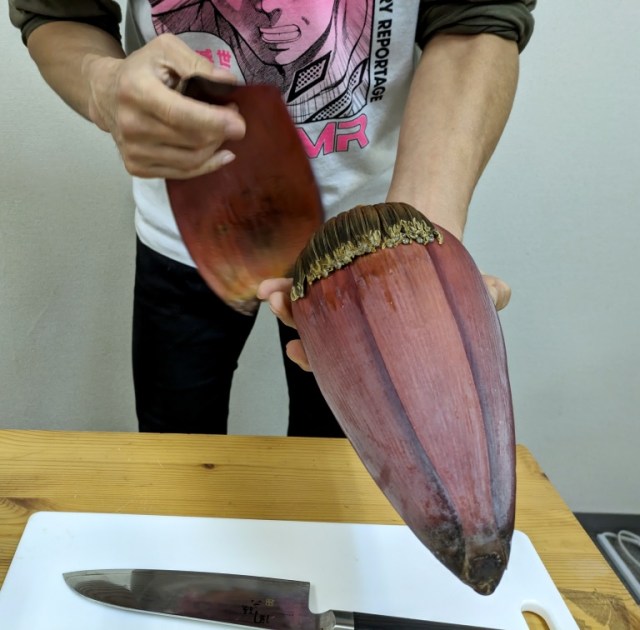
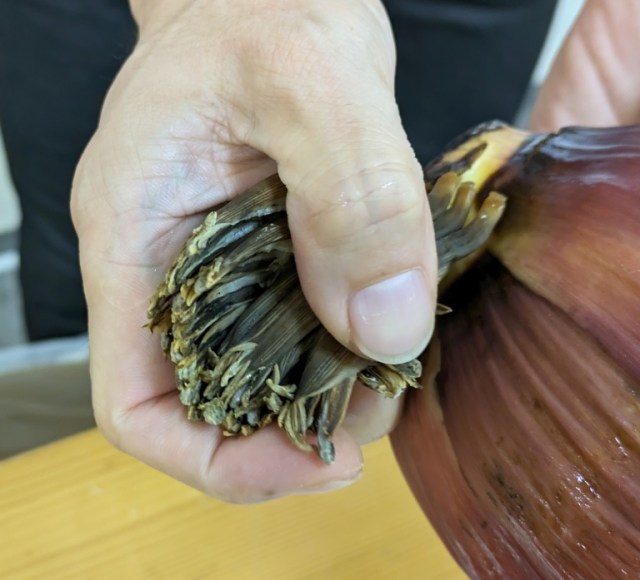
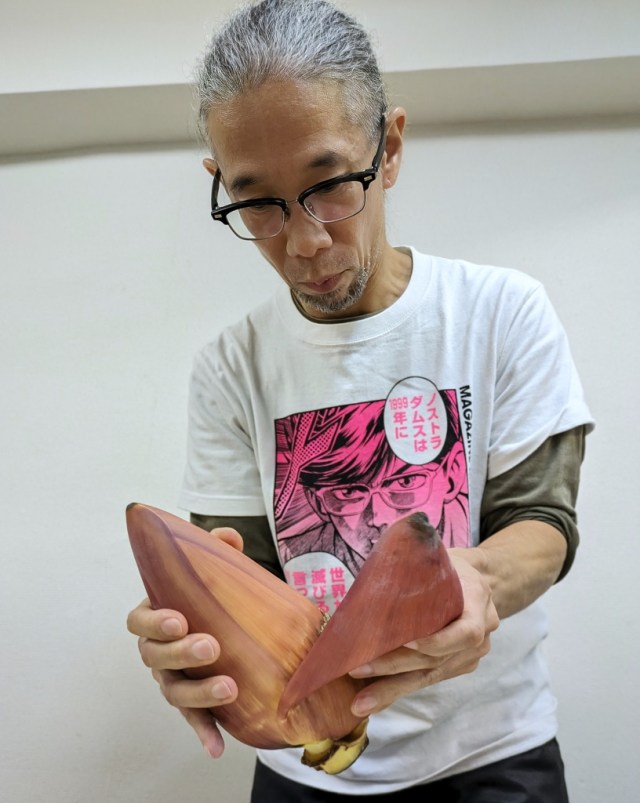
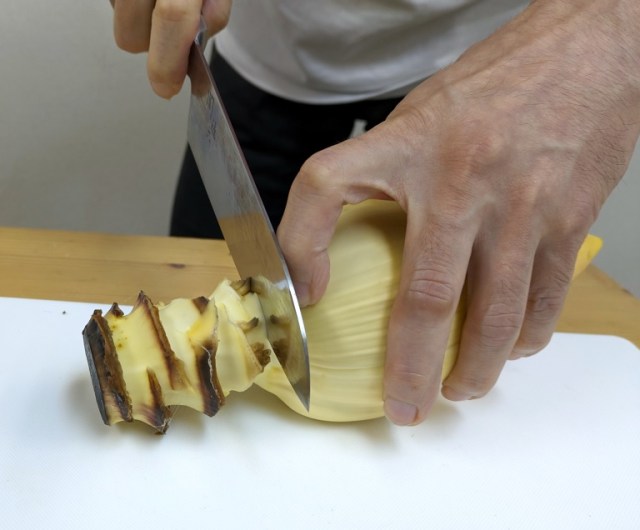
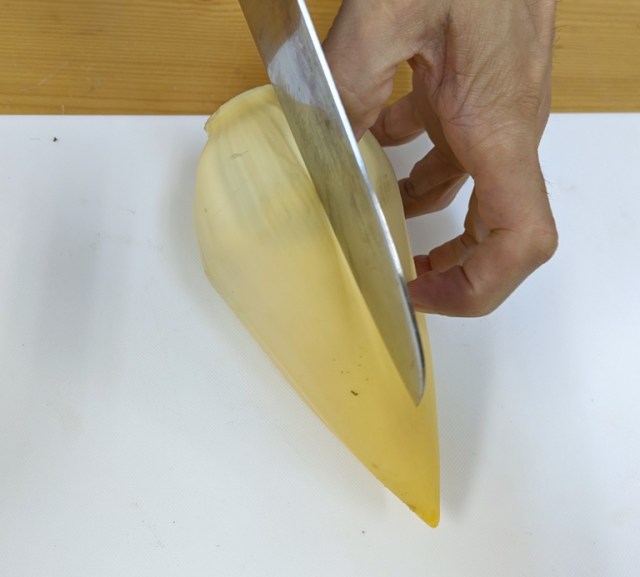
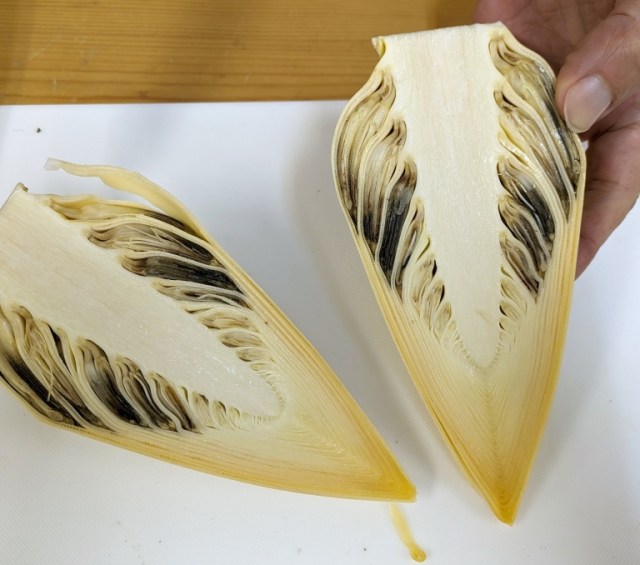
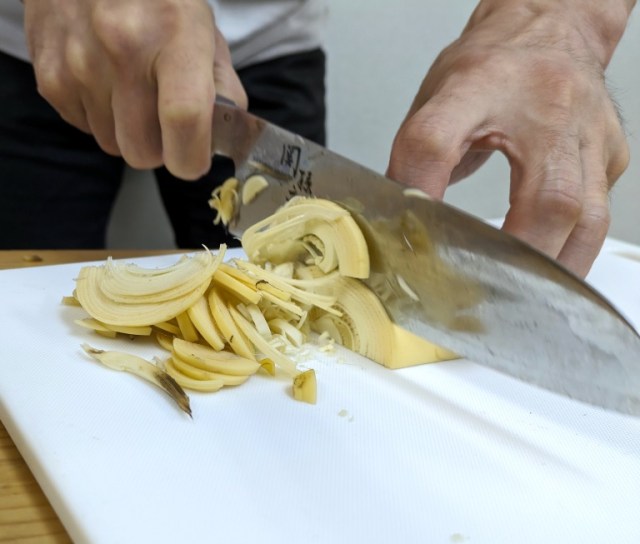
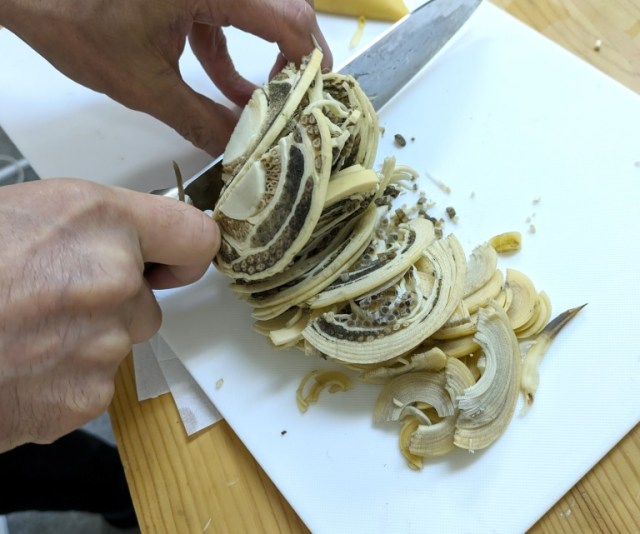
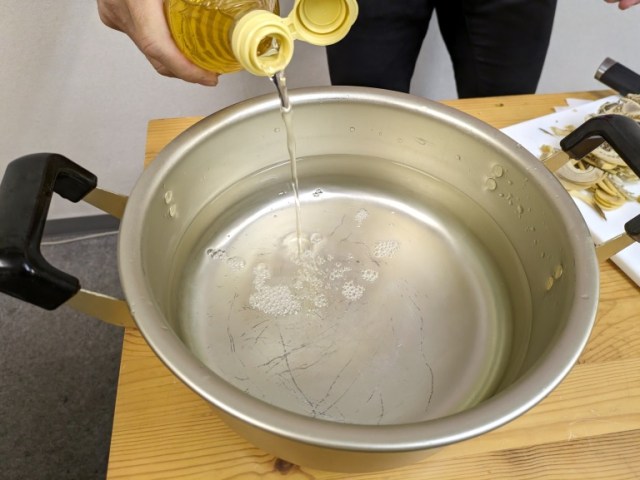
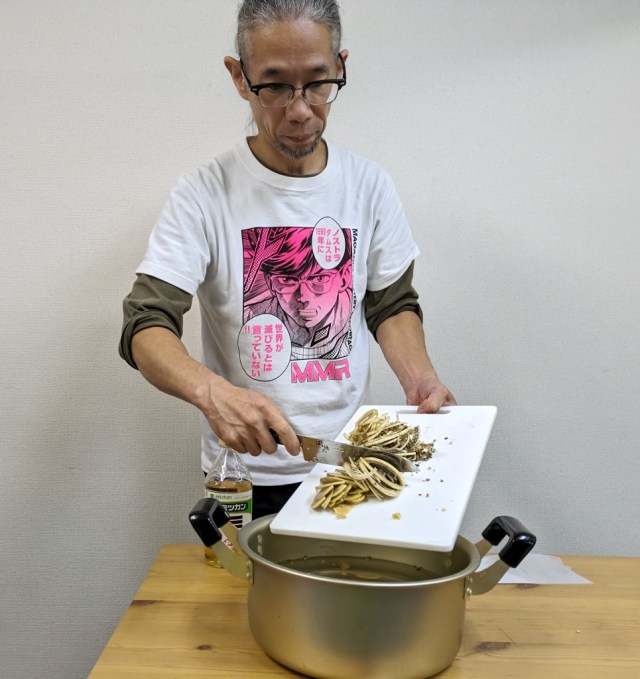
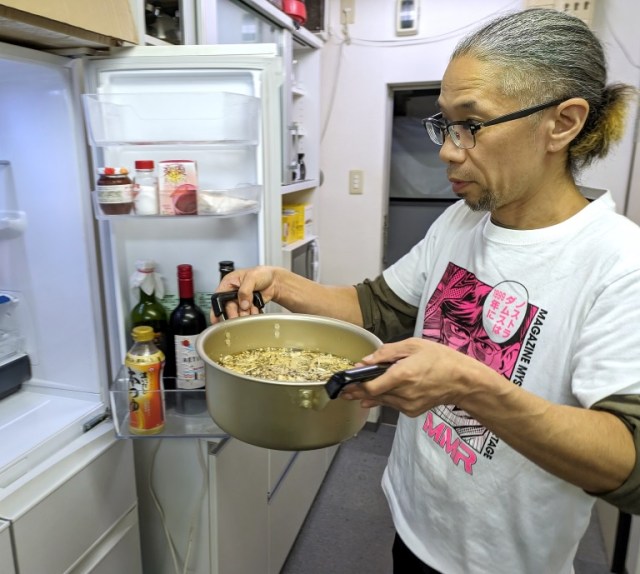
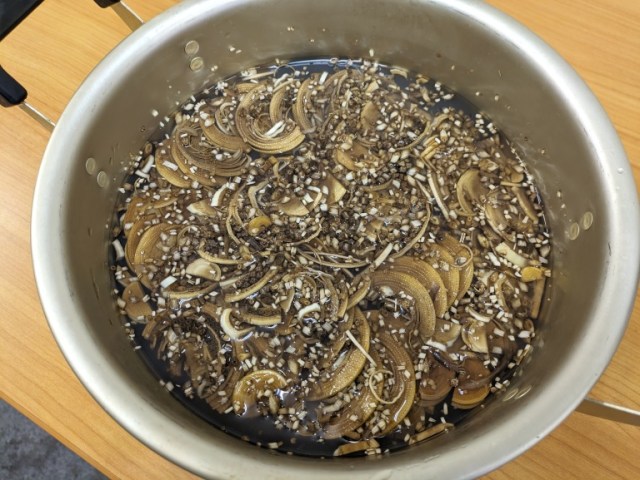
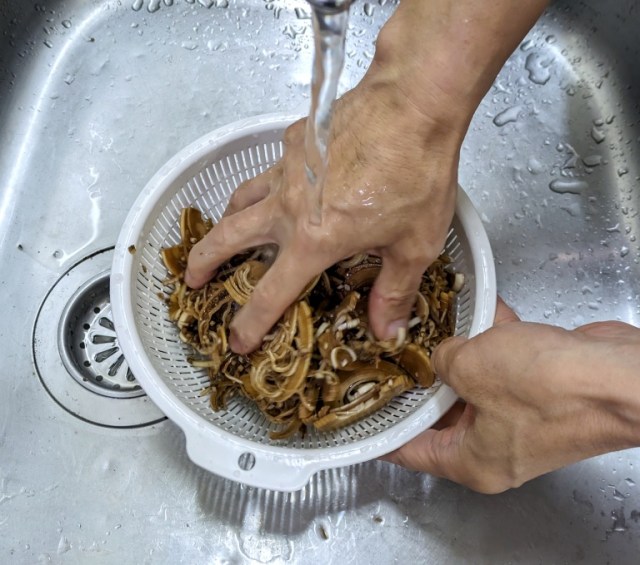
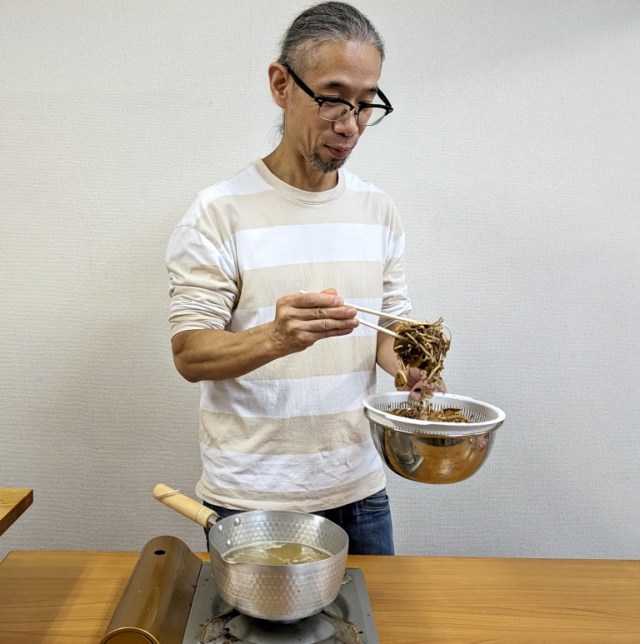
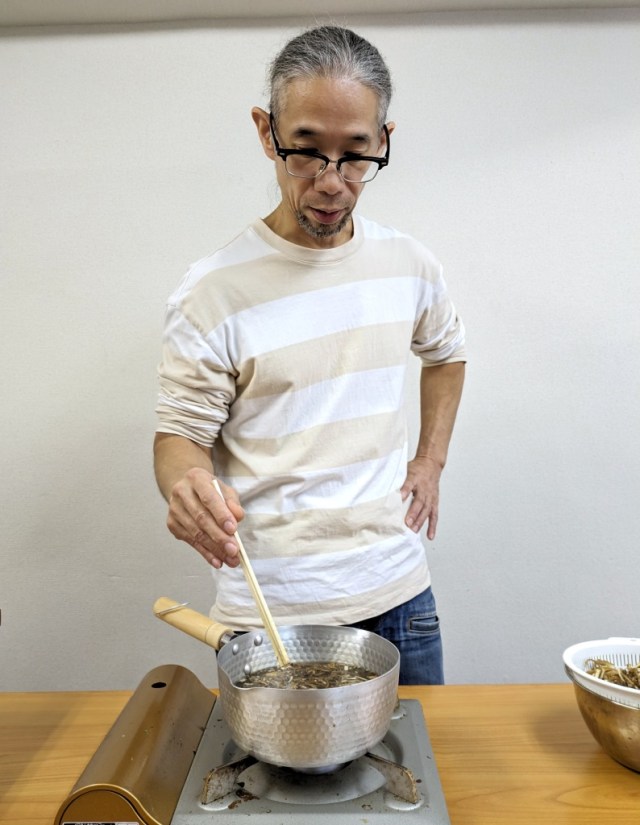
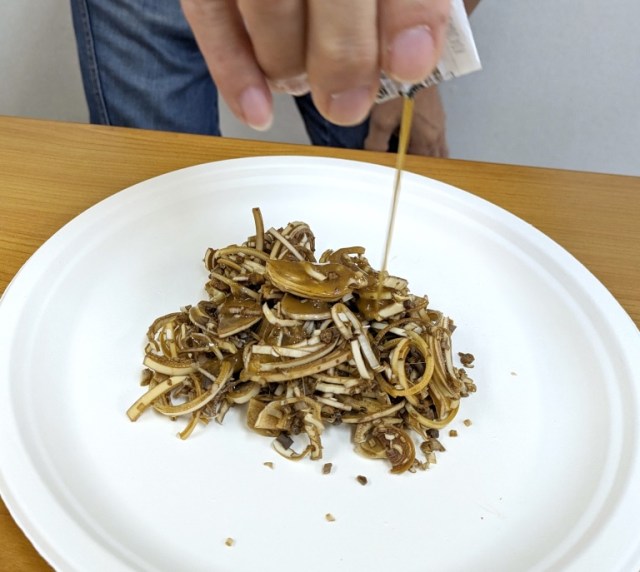
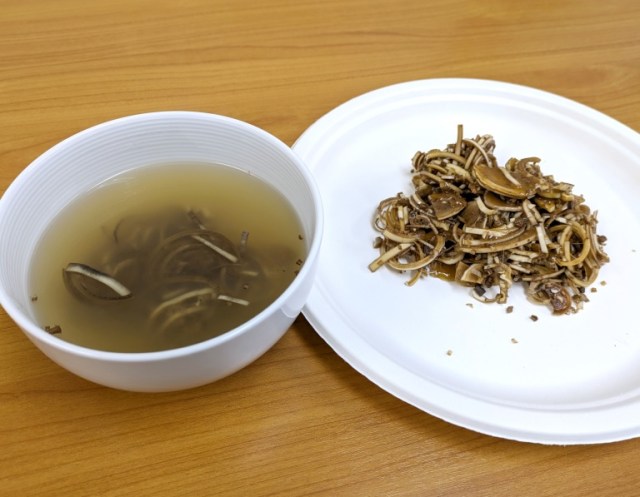
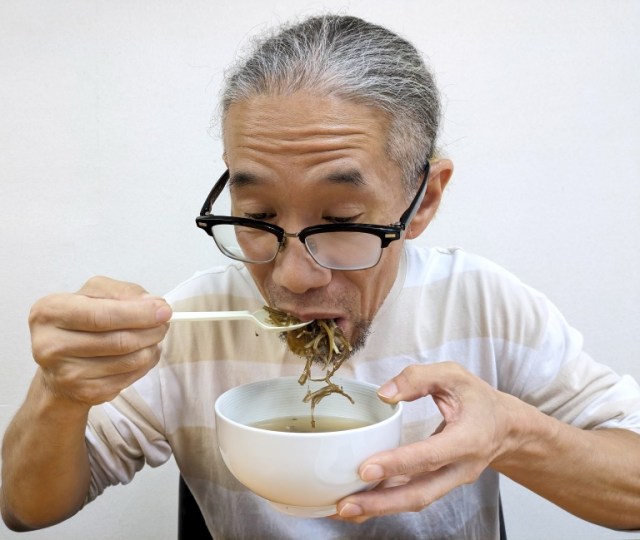
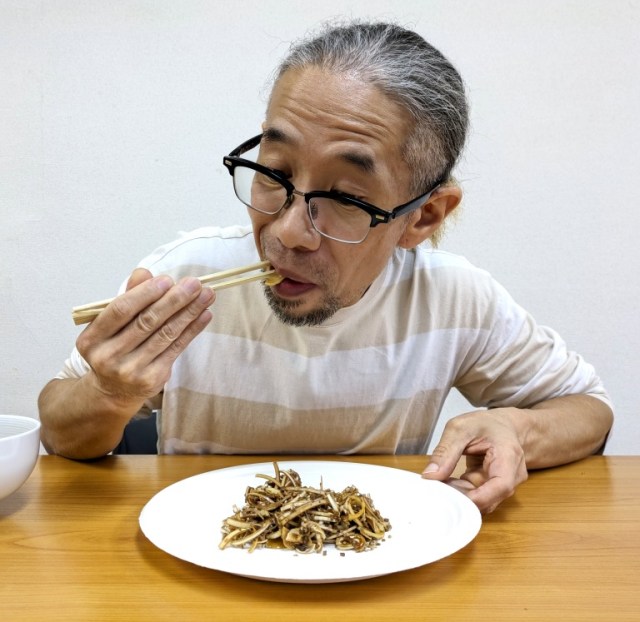
 This super-rare Japanese banana has edible skin!【Taste test】
This super-rare Japanese banana has edible skin!【Taste test】 Tokyo Banana’s Legendary Curry Bread tests the limits of what makes a good karepan 【Taste test】
Tokyo Banana’s Legendary Curry Bread tests the limits of what makes a good karepan 【Taste test】 Legendary Melon Bread by Tokyo Banana returns after 20-year absence【Taste Test】
Legendary Melon Bread by Tokyo Banana returns after 20-year absence【Taste Test】 Japanese chain Bikkuri Donkey’s enormous salad almost beats Mr. Sato, but not because of its size
Japanese chain Bikkuri Donkey’s enormous salad almost beats Mr. Sato, but not because of its size We’re going bananas over these amazing Attack on Titan…bananas!【Photos】
We’re going bananas over these amazing Attack on Titan…bananas!【Photos】 Seaside scenery, history, and so many desserts on Yokohama’s Akai Kutsu【Japan Loop Buses】
Seaside scenery, history, and so many desserts on Yokohama’s Akai Kutsu【Japan Loop Buses】 Foreigner’s request for help in Tokyo makes us sad for the state of society
Foreigner’s request for help in Tokyo makes us sad for the state of society Japanese city loses residents’ personal data, which was on paper being transported on a windy day
Japanese city loses residents’ personal data, which was on paper being transported on a windy day Japanese ramen restaurants under pressure from new yen banknotes
Japanese ramen restaurants under pressure from new yen banknotes Akihabara pop-up shop sells goods made by Japanese prison inmates
Akihabara pop-up shop sells goods made by Japanese prison inmates We tried Korea’s way-too-big King Tonkatsu Burger at Lotteria 【Taste Test】
We tried Korea’s way-too-big King Tonkatsu Burger at Lotteria 【Taste Test】 Red light district sushi restaurant in Tokyo shows us just how wrong we were about it
Red light district sushi restaurant in Tokyo shows us just how wrong we were about it Sandwiches fit for a sumo served up in Osaka【Taste Test】
Sandwiches fit for a sumo served up in Osaka【Taste Test】 Osaka governor suggests lowering voting age to 0 to curb population decline
Osaka governor suggests lowering voting age to 0 to curb population decline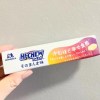 Do Hi-Chew-flavor Hi-Chews have a reason to exist?【Taste test】
Do Hi-Chew-flavor Hi-Chews have a reason to exist?【Taste test】 McDonald’s new Happy Meals offer up cute and practical Sanrio lifestyle goods
McDonald’s new Happy Meals offer up cute and practical Sanrio lifestyle goods French Fries Bread in Tokyo’s Shibuya becomes a hit on social media
French Fries Bread in Tokyo’s Shibuya becomes a hit on social media Studio Ghibli releases new action figures featuring Nausicaä of the Valley of the Wind characters
Studio Ghibli releases new action figures featuring Nausicaä of the Valley of the Wind characters New private rooms on Tokaido Shinkansen change the way we travel from Tokyo to Kyoto
New private rooms on Tokaido Shinkansen change the way we travel from Tokyo to Kyoto Tokyo Tsukiji fish market site to be redeveloped with 50,000-seat stadium, hotel, shopping center
Tokyo Tsukiji fish market site to be redeveloped with 50,000-seat stadium, hotel, shopping center Beautiful Ghibli sealing wax kits let you create accessories and elegant letter decorations【Pics】
Beautiful Ghibli sealing wax kits let you create accessories and elegant letter decorations【Pics】 Studio Ghibli releases Kiki’s Delivery Service chocolate cake pouches in Japan
Studio Ghibli releases Kiki’s Delivery Service chocolate cake pouches in Japan New definition of “Japanese whiskey” goes into effect to prevent fakes from fooling overseas buyers
New definition of “Japanese whiskey” goes into effect to prevent fakes from fooling overseas buyers Our Japanese reporter visits Costco in the U.S., finds super American and very Japanese things
Our Japanese reporter visits Costco in the U.S., finds super American and very Japanese things All-you-can-drink Starbucks and amazing views part of Tokyo’s new 170 meter-high sky lounge
All-you-can-drink Starbucks and amazing views part of Tokyo’s new 170 meter-high sky lounge More foreign tourists than ever before in history visited Japan last month
More foreign tourists than ever before in history visited Japan last month New Pokémon cakes let you eat your way through Pikachu and all the Eevee evolutions
New Pokémon cakes let you eat your way through Pikachu and all the Eevee evolutions Disney princesses get official manga makeovers for Manga Princess Cafe opening in Tokyo
Disney princesses get official manga makeovers for Manga Princess Cafe opening in Tokyo Sales of Japan’s most convenient train ticket/shopping payment cards suspended indefinitely
Sales of Japan’s most convenient train ticket/shopping payment cards suspended indefinitely Sold-out Studio Ghibli desktop humidifiers are back so Totoro can help you through the dry season
Sold-out Studio Ghibli desktop humidifiers are back so Totoro can help you through the dry season Japanese government to make first change to romanization spelling rules since the 1950s
Japanese government to make first change to romanization spelling rules since the 1950s Ghibli founders Toshio Suzuki and Hayao Miyazaki contribute to Japanese whisky Totoro label design
Ghibli founders Toshio Suzuki and Hayao Miyazaki contribute to Japanese whisky Totoro label design Doraemon found buried at sea as scene from 1993 anime becomes real life【Photos】
Doraemon found buried at sea as scene from 1993 anime becomes real life【Photos】 Tokyo’s most famous Starbucks is closed
Tokyo’s most famous Starbucks is closed One Piece characters’ nationalities revealed, but fans have mixed opinions
One Piece characters’ nationalities revealed, but fans have mixed opinions We asked a Uniqlo employee what four things we should buy and their suggestions didn’t disappoint
We asked a Uniqlo employee what four things we should buy and their suggestions didn’t disappoint Princesses, fruits, and blacksmiths: Study reveals the 30 most unusual family names in Japan
Princesses, fruits, and blacksmiths: Study reveals the 30 most unusual family names in Japan Tokyo Banana Curry adds capital’s souvenir sweet’s sweetness to roux, but not in Tokyo
Tokyo Banana Curry adds capital’s souvenir sweet’s sweetness to roux, but not in Tokyo Tokyo’s spicy cod roe ice cream: An unexpected dessert that tastes about like what you’d expect
Tokyo’s spicy cod roe ice cream: An unexpected dessert that tastes about like what you’d expect Häagen-Dazs Japan gives us glorious Banana Chocolate ice cream
Häagen-Dazs Japan gives us glorious Banana Chocolate ice cream Mr. Sato tries out Kappa Sushi’s salmon salad mountain, a fun dish available for only one week
Mr. Sato tries out Kappa Sushi’s salmon salad mountain, a fun dish available for only one week Cafe next to Tokyo Station offers all-you-can-eat tarts, and Mr. Sato is ready for his desserts
Cafe next to Tokyo Station offers all-you-can-eat tarts, and Mr. Sato is ready for his desserts Love banana bread? Love ice cream? You can have both with this Banana Bread Ice Cream Sandwich!
Love banana bread? Love ice cream? You can have both with this Banana Bread Ice Cream Sandwich! Mister Donut teams up with master patissier for second round of luxurious, limited-edition donuts
Mister Donut teams up with master patissier for second round of luxurious, limited-edition donuts Mr. Sato channels his inner Elsa, books a night at a Hokkaido ice hotel 【Photos】
Mr. Sato channels his inner Elsa, books a night at a Hokkaido ice hotel 【Photos】 In the evolution of pens, a “banana pen” is the obvious next step
In the evolution of pens, a “banana pen” is the obvious next step We enjoy an unlimited salad and dessert buffet for 780 yen at Tokyo shabu shabu restaurant
We enjoy an unlimited salad and dessert buffet for 780 yen at Tokyo shabu shabu restaurant Time to go bananas for McDonald’s Japan’s chocolate banana smoothie and other new treats
Time to go bananas for McDonald’s Japan’s chocolate banana smoothie and other new treats Japanese clothing chain Uniqlo now selling flowers online, they’re way better than we imagined
Japanese clothing chain Uniqlo now selling flowers online, they’re way better than we imagined Starbucks Japan’s new banana chocolate pudding is so good we can’t keep our language clean
Starbucks Japan’s new banana chocolate pudding is so good we can’t keep our language clean Bikkuri Donkey isn’t only good for hamburger steaks–their breakfast is bomb too!
Bikkuri Donkey isn’t only good for hamburger steaks–their breakfast is bomb too! Japanese cafe tops its shaved ice with fire for an impossibly delicious treat【Video】
Japanese cafe tops its shaved ice with fire for an impossibly delicious treat【Video】 Going Bananas for Bananart on Banana Day! Students create a “bananamation” movie【Video】
Going Bananas for Bananart on Banana Day! Students create a “bananamation” movie【Video】
Leave a Reply